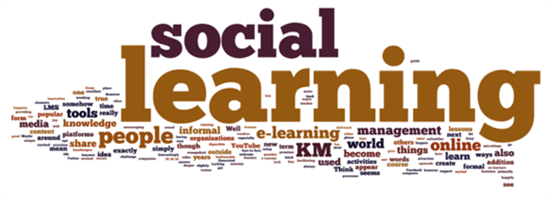Lesson 14 Bandura’s Social Learning Theory
According to the social learning theory, learning occurs within the social context and that we learn from observing and copying or imitating other’s behavior. This theory was formulated by an American-Canadian Psychologist Professor in Stanford University. Slavin, et al. (1995) in Vega and Prieto (2012) mentioned Bandura’s belief that much of the human learning is not shaped by its consequences but is more efficiently learned directly from a model. This is known as the observational learning.
Lucas and Corpuz (2013) identified the effects of modeling on the behavior of children, those are:
- Modeling teaches new behavior.
- Modeling influences the frequency of the previously learned behaviors.
- Modeling may encourage previously forbidden behaviors.
- Modeling increases the frequency of similar behaviors.
Bandura’s famous experiment to prove the application of this theory was that which was called “Bobo Doll Experiment”. Please watch the video of the said experiment to be provided.
After his analyses, he proposed four phases in observational learning: attention, retention, motor reproduction and motivation.
Below are the four components of successful modelling in observational learning as discussed by Bulusan, et al. (2019):
- Attention. To meaningfully perceived relevant behaviors, one should pay attention. At any given moment, one can attend to many activities. The characteristic of the model and the observer influence one’s attention to models. This explains why teachers make use of bright colors or large fonts in their instructional aids for modeling to snatch the attention of the learners.
- Retention. Paying attention to something should result in retention that requires cognitively organizing, rehearsing, coding and transforming modeled information for storage in memory. Rehearsal also serves a vital role in retention of knowledge. This is a mental review of information. Sometimes, the observer retains the information through association and cognitive pattern. In dance class for instance, counts 1-2-3-4 to 8 with corresponding steps to store the dance steps in his/her memory. Rehearsal without coding and coding without rehearsal are less effective.
- Motor Reproduction. To strengthen learning through observation, one needs to translate the visual and symbolic conceptions into observable behavior. Subsequent production of this behavior indicates an increase in learning. Bandura noted that observers refine their skills with practice, corrective feedback and reteaching. Sometimes problems in producing modeled behaviors arise not only because information is inadequately coded but also because learners experience difficulty translating coded information in memory into overt action. For example, a child may have a basic understanding of how to tie shoelaces but not be able to translate that knowledge into behavior. Teachers who suspect that students are having trouble demonstrating what they have learned may need to test students in different ways.
- Motivation. Influencing observational learning is motivation. Individuals perform actions they believe will result on rewarding outcomes and avoid acting on the ways they think will be responded to negatively. Person also act based on their values, performing activities they value and avoiding those they find unsatisfying, regardless of the consequences to themselves and others. Motivation is a critical process of observational learning that teachers promote in various ways, including making learning interesting, relating material to students’ interests, having students set goals and monitor goal progress, providing feedback indicating increasing competence and stressing the value of learning.
Educational Implications
Lucas and Corpuz (2013) several implications of social learning theory for classroom use. Those are:
- Students often learn a great deal by simply observing other people.
- Describing the consequences of behavior can effectively increase the appropriate behaviors and decrease the inappropriate ones. This can involve discussing with learners about the rewards and consequences of various behaviors.
- Modeling provides an alternative to shaping for teaching new behaviors. Instead of using shaping, modeling can provide a faster, more efficient means for teaching new behavior. To promote effective modeling a teacher must make sure that the four essential conditions exist: attention, retention, motor reproduction and motivation.
- Teachers and parents must model appropriate behaviors and take care that they never model inappropriate ones.
- Teachers should expose students to a variety of other models. This technique is especially important to breakdown traditional stereotypes.
References
- Aquino, A. M. (2009). Facilitating human learning (First Edition). Rex Book Store, Inc.
- Bulusan, F., Raquepo, M. R., Balmeo, M. L., & Gutierrez, J. C. (2019). Facilitating learner-centered teaching (First Edition). Rex Book Store, Inc.
- CMO No. 75 s. 2017, Policies, Standards and Guidelines for Bachelor of Secondary Education (BSEd), p. 39
- CMO No. 80 s. 2017, Policies, Standards and Guidelines for Bachelor of Physical Education (BPEd), p. 24
- Lucas, M. R. D., & Corpuz, B. B. (2013). Facilitating learning: a metacognitive process (3rd Edition). LORIMAR Publishing, Inc.
- Ornos, P. S., Gonzaga, E. P., Esgra, C. B., Gomez, N. G., Tarinay, A. R., & Verde, S. P. (2008). Facilitators of the learning process. Grandwater Publications.
- Vega, V. A., & Prieto, N. G. (2012). Facilitating learning (Revised Edition). Books Atbp. Publishing Corp.




Comments
Post a Comment